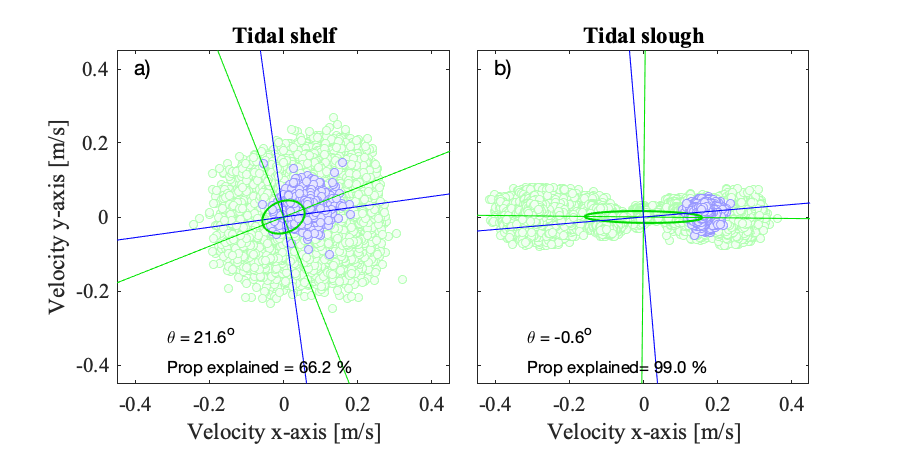Rotation of the velocity measurements
{{#default_form:Processing}}
{{#arraymap:
Velocity point-measurements
|,|x||}}
{{#arraymap:level 2 segmented and quality controlled|,|x||}}
Measured velocities must be rotated in the flow's frame of reference since inertial subrange model differs between the velocity components, and the effects of anisotropy are more pronounced in the transverse and vertical direction. When the vertical velocities are too heavily impacted by anisotropy, the longitudinal direction may be used to derive <math>\varepsilon</math> estimate. The longitudinal velocity must thus be aligned with the mean flow direction, which may require rotating the measurements into a new frame of reference i.e., the analysis frame of reference.
The velocities are measured in either the instrument's coordinate system (XYZ), beam coordinates or more rarely in the earth's coordinate system (east, north and up). Ideally, the instrument's x-axis is aligned with the general direction of the mean flow. This is particularly important when planning on calculating turbulent shear stresses via covariances as correlated noise may ensue when rotating the measurements into a new frame of reference. For some shallow systems, it's fairly easy to align an acoustic-Doppler with the direction of the flow (see Fig 1b). Alternatively, the entire dataset may be rotated using the velocities' principal components. For instance, the Tidal Slough example below flows generally along the channel's length except at the turn of the tide. In other datasets, like the Tidal Shelf, it's necessary to align

